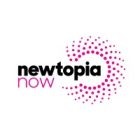

Three primary methodologies are at the core of branding narratives and marketing communication: convergent, divergent, and transformational. Throughout launching, growing, refreshing, and stabilizing the brand, these CPG brand communication strategies are individually designed to benefit in different ways and used in various situations.
Convergent Communication Strategy
A convergent communication strategy focuses on combining existing messages from various sources into one concise message that speaks to the brand’s core values. This approach is beneficial when launching a new product because it allows you to quickly establish an identity for your brand based on existing data and trends. It also helps when undergoing a brand refresh because you can draw on the existing messaging that resonated with consumers before and use it to create something fresh and new.
Tangible action items for convergent messaging include:
- Utilizing multiple mediums to spread a unified message, such as targeted emails, social media posts, and web banners, in addition to the narrative on-pack.
- Developing content that is specifically relevant to the target audience. Think “vegan” callouts, etc.
- Creating partnerships with other organizations and influencers to reach a wider audience. Jeni’s Ice Cream does this very well.
- Leveraging data analysis to track consumer behavior and tailor messages accordingly. Start with basic consumer research.
Divergent Communication Strategy
Unlike convergent strategies, divergent communication strategies focus on creating something unique by exploring various options without limits or restrictions. This strategy is beneficial when launching a new product because it allows you to explore multiple directions without being tied down by preconceived notions about what the product should look like or what message to lean on.
It also helps during a brand refresh by allowing you to break away from established norms while still staying true to the brand’s core values.
Action items for this strategy include:
- Developing multiple content pieces to appeal to different segments within the target audience and testing.
- Crafting messages that reflect the values and culture of the brand while resonating with each segment.
- Establishing partnerships with influencers that have distinct audiences, who can help drive engagement among their following.
- Analyzing consumer data to tailor messages to specific consumer behavior.
Transformation Communication Strategy
The transformation communication strategy is about evolving an existing message. This approach allows you to take an idea that’s been historically successful and give it a fresh spin, which is why it’s advantageous during a brand refresh.
It also helps when launching a new product or service because it gives you something familiar for consumers to latch onto while introducing something unique and original.
Try the following:
- Using unique storytelling to create an emotional connection with the consumer.
- Leveraging data and analytics to create personalized messages that target specific consumers.
- Incorporating updated visual elements to build brand recognition.
The key takeaway is that there isn’t one singular approach, but there is a learned manner of adapting each communication strategy type to a specific need. Also, play a little with each method before you tie one message to your brand! Narrative and messaging’s jobs are to connect first and foremost but be selective about where you put a stake in the ground.
To read more about marketing principles, check out this article.









